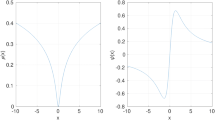Abstract
In the field of artificial vision, researchers have almost always focused their attention on analysis and processing of monochromatic images, restricting the use of colours to the display phase, which involves an interaction between the human user and the machine. In recent years, acquisition and processing systems for colour images have became increasingly available or accessible, so that this research area is now under continuing development and rapidly growing in importance.
This paper deals with analysis of natural scenes, represented by colour images. In particular, low-level processing steps are investigated, from filtering to segmentation, while, for the moment, reduction in information with feature-selection techniques is not considered. The proposed filtering utilizes a widely used (in the monochromatic case) edge-preserving smoothing filter which has been extended to the multichromatic case.
Concerning the segmentation process, a classical region-growing approach is first followed, and, subsequently, an adaptive multistep processing algorithm is adopted, which is based on both fuzzy techniques and a backtracking procedure to obtain a set of regions that compare favourably with the original image.
Preview
Unable to display preview. Download preview PDF.
Similar content being viewed by others
References
R.Ohlander — Analysis of natural scenes — Ph.D. Thesis, Dept. of Computer Science, Carnegie Mellon University, 1975.
J.R.Kender — Saturation, hue, and normalization color: calculation, digitization effects, and use — Technical Report, Dept. of Computer Science, Carnegie Mellon University, 1976.
R.Nevatia — A color edge detector — Proc. IJCPR-III, pp. 829–832, 1976.
O.D.Faugeras — Digital color image processing within the framework of a human visual model — IEEE Trans. on Acoustics, Speech and Signal Processing, vol. ASSP-27, n. 4, 1979.
M. Nagao and T. Matsuyama — A structural analysis of complex aerial photographs — Plenum Press, New York, 1980.
Y. Ohta, T. Kanade, and M. Sakai — Color information for region segmentation — CVGIP 13, pp.222–241, 1980.
J.D. Foley and A. VanDam — Fundamentals of interactive computer graphics — Addison Wesley, Reading (MA), 1984.
R. Gershon — Aspects of perception and computation in color vision — CVGIP 32, pp. 244–277, 1985.
Y. Ohta — Knowledge-based interpretation of outdoor natural color scenes — Pitman, Marshfield (MA), 1985.
F. Bumbaca and K.C. Smith — Design and implementation of a colour vision model for computer vision applications — CVGIP 39, pp. 226–245, 1987.
B.A.Wandell — The synthesis and analysis of color images — IEEE Trans. on Pattern Analysis and Machine Intelligence, vol. PAMI-9, n. 1, 1987.
D.D. Giusto and G. Vernazza — Optical flow calculation from feature point analysis through an automatic segmentation process — Signal Processing, vol. 16, n. 1, pp. 41–51, 1989.
Author information
Authors and Affiliations
Editor information
Rights and permissions
Copyright information
© 1989 Springer-Verlag Berlin Heidelberg
About this chapter
Cite this chapter
Giusto, D.D., Vernazza, G. (1989). An adaptive method for natural scene analysis. In: Cantoni, V., Creutzburg, R., Levialdi, S., Wolf, G. (eds) Recent Issues in Pattern Analysis and Recognition. Lecture Notes in Computer Science, vol 399. Springer, Berlin, Heidelberg. https://doi.org/10.1007/3-540-51815-0_61
Download citation
DOI: https://doi.org/10.1007/3-540-51815-0_61
Published:
Publisher Name: Springer, Berlin, Heidelberg
Print ISBN: 978-3-540-51815-0
Online ISBN: 978-3-540-46815-8
eBook Packages: Springer Book Archive




